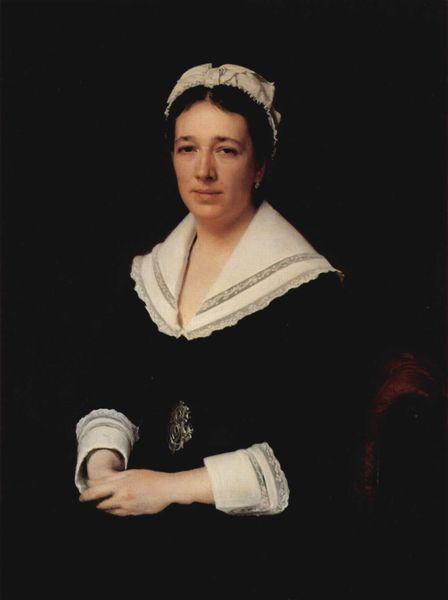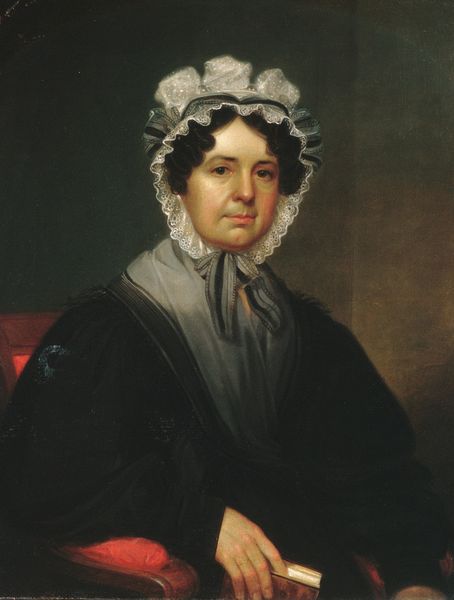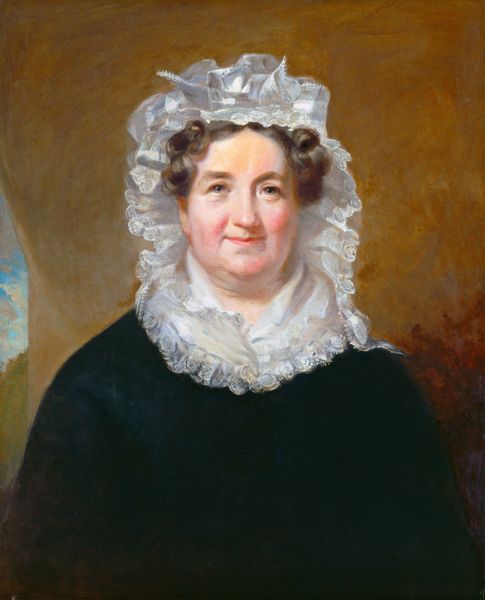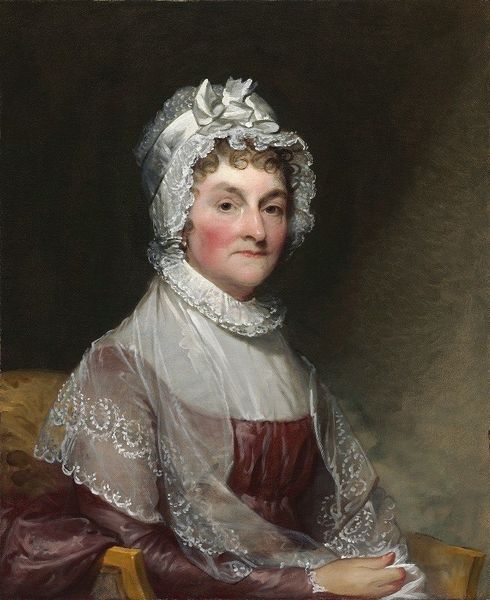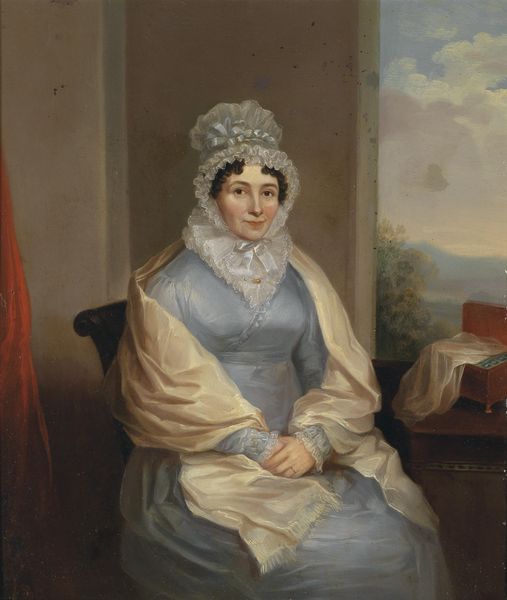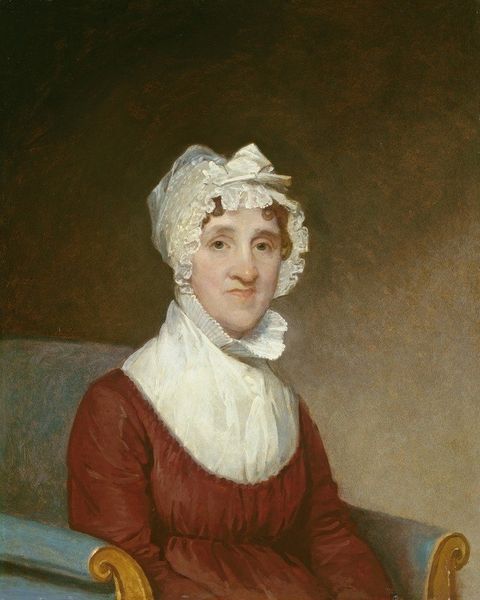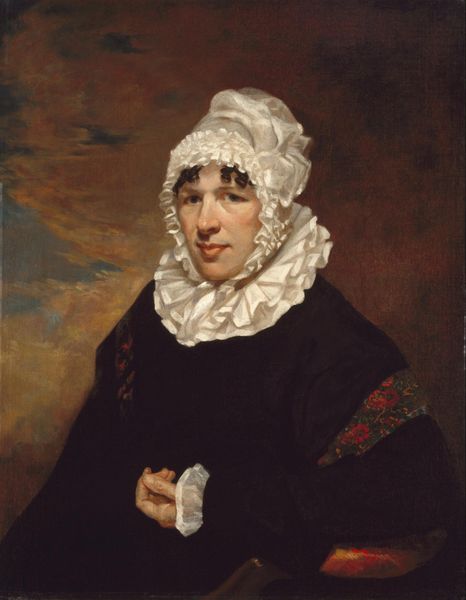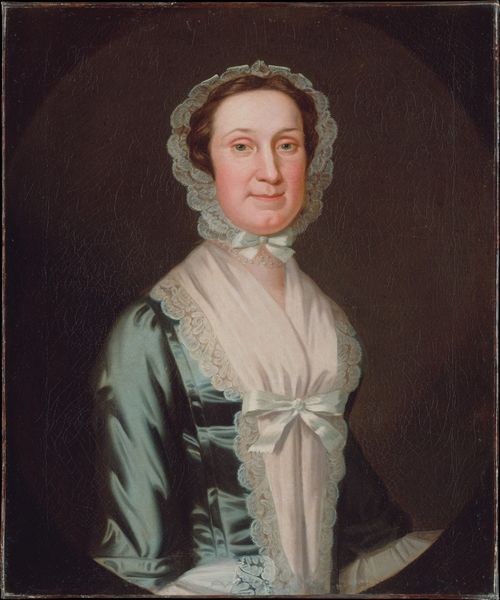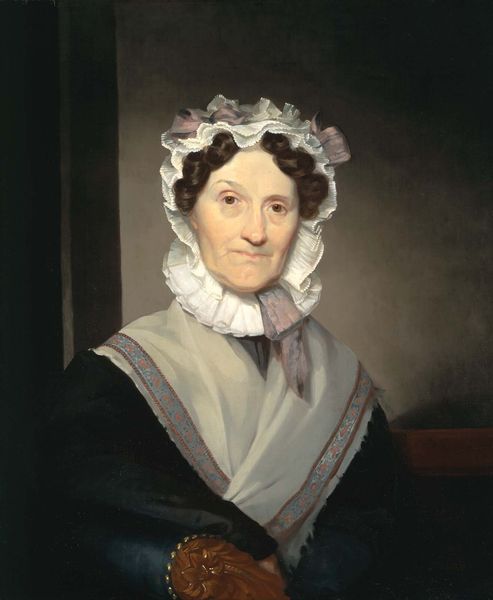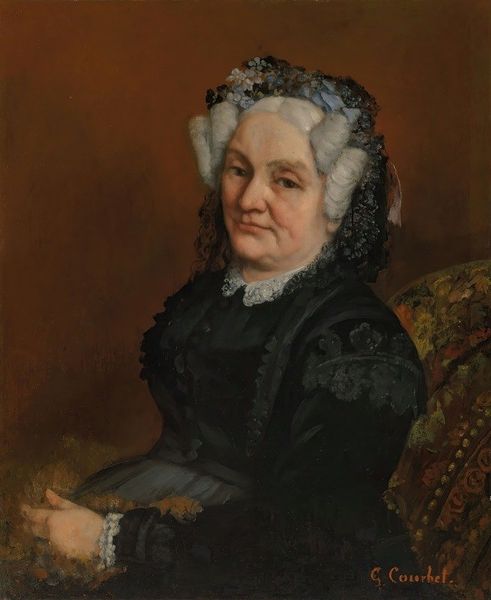
painting, oil-paint
#
painting
#
oil-paint
#
academic-art
#
realism
Dimensions: overall: 91.1 x 74.3 cm (35 7/8 x 29 1/4 in.) framed: 116.8 x 99.1 x 4.4 cm (46 x 39 x 1 3/4 in.)
Copyright: National Gallery of Art: CC0 1.0
Curator: This portrait of Frances Ludlum Morris, or possibly Mrs. Robert Morris, painted by Frederick R. Spencer in 1838, has such a quietly formidable presence. Editor: Indeed. My first impression is one of remarkable texture – the crisp white of the lace contrasts so sharply with the heavy black fabric. You can almost feel the weight of that dress, see the hours of labour that went into those delicate details. Curator: Precisely. And it speaks volumes about social class. To have one’s portrait painted was a considerable status symbol, an exercise of wealth and patronage, particularly in 1830s America. The material of the clothing, the time to pose... all points to her social position. Editor: Right, oil paint was a high-end medium—indicative of someone in a position to commission artwork. Consider the work that went into creating the lace, possibly done by other women, and who, even if their work elevated Mrs. Morris’ social appearance, did not occupy the same social strata. Curator: What strikes me is the unflinching gaze. The artist positions us directly in front of Mrs. Morris, there's a subtle challenge to the viewer. This wasn't about flattering the sitter; it was about recording her status. Academic art, for all its traditional constraints, did attempt realism. Editor: Though her class standing is undeniable, the portrait conveys an understated tone. Is she presented more for future generations to understand her wealth and lineage, or for simple, personal enjoyment? Curator: A crucial distinction! Remember that galleries and museums were becoming increasingly prominent in this period, changing the landscape of art consumption and, indeed, art creation. Portraits played a powerful public role. Perhaps there’s ambition in its subdued dignity. Editor: I agree that in the rendering of materials and careful accounting for its role in shaping social standing, the image makes visible class in a fascinating and lasting way. Curator: Seeing beyond the academic, conventional rendering of her physical appearance really highlights how intertwined this artwork is with questions about society, display, and legacy. Editor: Yes. The careful control of what is displayed tells a deeper story of those doing the making, either with needle or brush.
Comments
No comments
Be the first to comment and join the conversation on the ultimate creative platform.
